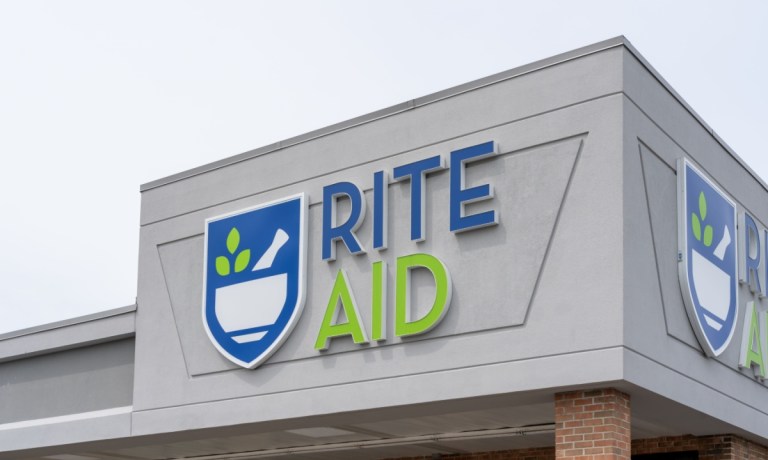“Data is our best friend right now,” Jeanniey Walden, the chief marketing and customer officer at Rite Aid, told PYMNTS, noting that following an 11-month period in bankruptcy, Rite Aid has emerged with a refined approach to managing their marketing and merchandising efforts by leveraging data-driven decision-making and a greater understanding of how customer behaviors have shifted In the past year.
Rite Aid’s reinvention strategy is constantly leveraging this information to optimize operational elements like store formats as well as to address key items like shrink and informing key marketing and merchandising decisions, Walden explained.
Data in the report, “Leveraging Item-Level Receipt Data: How Card-Linked Offers Helped Drive Year-End Spend,” a PYMNTS Intelligence collaboration with Banyan, found that 97 million cardholders utilized card-linked offers during the 2023 holiday season.
Whether it’s special offers tied to seasonal needs, like flu or allergy season or even the holidays, retail pharmacies that understand customer trends through data can create and enhance loyalty programs that feel personalized and relevant without overstepping the line.
All that’s to say, by understanding purchasing patterns and customer needs, retail pharmacies can boost profitability and growth, ensuring that loyalty is a two-way street.
Advertisement: Scroll to Continue
And according to Walden, Rite Aid’s loyalty program, Rite Aid Rewards, has played a central role in both revenue generation and customer retention.
Harnessing Data as a Loyalty Engine and Decision Driver
Responsible use of data and insights is “top of mind for us,” Walden said. Ensuring that insights and information are reviewed on multiple levels, including location-based trends, like where certain allergies are spiking, to category product demand.”
Through its loyalty program, Rite Aid Rewards, Rite Aid has been able to identify its most frequent, and high-value customers and craft experiences that cater to this group’s needs holistically, Walden explained. The rewards program also not only holds incentives and offers, but because of its high percentage of use among patrons, the program also gives Rite Aid an added vehicle for messaging. It acts as a communication bridge, helping the marketing team share insights and information that bring customers along their journey.
These insights into customer demographics and preferences have supported the efforts offering Rite Aid the ability to rebuild and reconfigure its front-end store operations offerings more effectively. Walden explained this approach has not only enhanced Rite Aid’s product offerings but also sharpened its focus on who its customer persona is today, and most importantly what their needs are, including how this changes across the various communities they serve. From a smaller total store footprint to real-time analysis of marketing programs, the company is harnessing data to ensure every marketing dollar invested is managed strategically.
One particularly innovative development is Rite Aid’s “Endless Aisle” program, which allows customers to scan a QR code and have a product delivered if it’s unavailable in-store. This initiative is part of Rite Aid’s broader mission to enhance the customer experience through convenience and accessibility, regardless of how customers choose to shop.
At the same time, seasonal events such as flu outbreaks, COVID spikes, or allergy season offer prime opportunities for Rite Aid to deliver timely, market-specific messages.
Navigating the Digital Shift to Deliver Customer-First Outcomes
And in a retail landscape where the number of paycheck-to-paycheck consumers is increasing, Rite Aid is adapting its offerings and pricing strategies to cater to this critical segment. Drawing on her previous experience as CMO at DailyPay, Walden highlighted that this demographic is not limited to low-income households but now spans across virtually all income levels.
“We appreciate the economic situation of our shoppers and communities,” she said, noting that Rite Aid has adjusted product selections and is constantly reviewing pricing to meet local needs. Rite Aid’s partnership with Klarna, for example, allows the company to offer flexible payment solutions, helping customers manage their purchases more easily in challenging economic times.
Walden also addressed the evolving role of digital channels in Rite Aid’s strategy. Consumers increasingly expect convenience and flexibility, toggling between in-store shopping, online orders, and home delivery. Rite Aid has responded with an omnichannel approach, providing options like Amazon, DoorDash, Instacart, and in-store pickup.
Separately, emerging from bankruptcy required a unified effort across all departments at Rite Aid. Walden emphasized that financial challenges like those faced during the bankruptcy are effective “silo busters,” forcing departments to break down walls and work collaboratively to achieve the company’s goals. From merchandising to marketing to supply chain logistics, every team had to focus on the end-to-end customer experience.
“The entire organization had to sit down around one goal: delivering the best experience for the customer,” she said. This collaborative approach has led to initiatives and broader innovations in customer service designed at helping Rite Aid re-establish itself in the competitive retail landscape.
As the company continues to refine its in-store and digital offerings, it remains committed to maintaining the customer-centric values that have been its cornerstone for decades, Walden emphasized.

